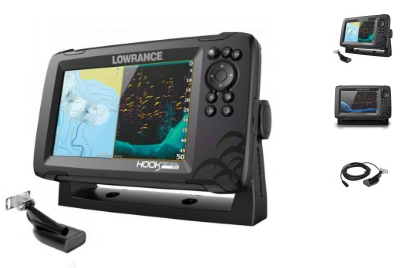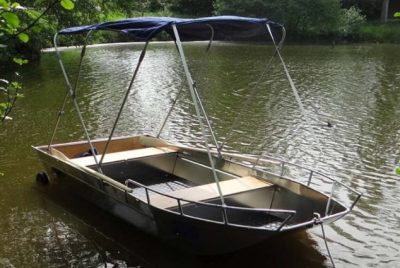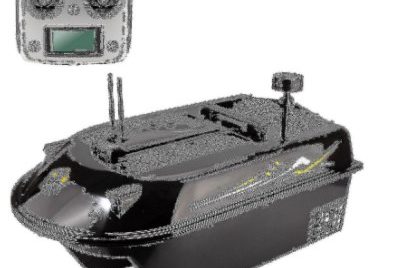Fish Finder For Boat
Introduction
Ahoy there, fellow fishing enthusiasts! If you’re looking to take your fishing game to the next level, a fish finder for your boat is the ultimate tool you need. As an avid angler, I have personally experienced the benefits of using a fish finder and would love to share my knowledge with you. In this article, I will guide you through the world of fish finders, discussing their advantages, factors to consider when choosing one, installation and usage tips, as well as maintenance guidelines. So, let’s dive in and discover how sonar technology can revolutionize your fishing experience!
Understanding Fish Finders for Boats
Before we delve into the specifics, let’s take a moment to understand what fish finders are all about. A fish finder, also known as a sounder or depth finder, is a device that uses sonar technology to locate fish and underwater structures. It provides real-time information about the depth of the water, the presence of fish, and the composition of the bottom surface.
Advantages of Using a Fish Finder
Using a fish finder can significantly enhance your fishing experience. Let’s explore some of the key advantages:
Locating Fish:
A fish finder enables you to precisely locate fish in the water, helping you identify their depth and position. This valuable information allows you to target specific areas, increasing your chances of a successful catch.
Understanding the Underwater Environment:
By providing detailed readings of the water depth and bottom structure, a fish finder helps you gain a better understanding of the underwater environment. This knowledge allows you to adapt your fishing techniques and choose the most suitable fishing spots.
Saving Time and Effort:
With a fish finder, you can eliminate guesswork and focus your efforts on productive fishing areas. By quickly identifying underwater structures and fish activity, you can maximize your time on the water and make every cast count.
Improving Catch Rates:
The ability to locate fish accurately enhances your catch rates. Whether you’re a recreational angler or a seasoned pro, a fish finder can significantly increase your fishing success and make each fishing trip more rewarding.
Factors to Consider when Choosing a Fish Finder
Selecting the right fish finder for your boat requires careful consideration of several factors. Let’s explore the key aspects to keep in mind:
Transducer Type
The transducer is a vital component of a fish finder as it emits and receives sonar signals. Consider the type of transducer, such as single-frequency, dual-frequency, or CHIRP, based on your fishing needs and the depth of the waters you frequent.
Display Quality
Choose a fish finder with a high-resolution display that provides clear and detailed imaging. A color display with ample screen size ensures better visibility, making it easier to interpret the readings and identify fish and underwater structures.
GPS and Mapping Features
Some fish finders come with integrated GPS and mapping capabilities, allowing you to mark waypoints, create routes, and track your fishing locations. These features provide added convenience and help you navigate unfamiliar waters with ease.
Power and Frequency
Consider the power output and frequency range of the fish finder. Higher power output allows for greater depth penetration, while a wider frequency range provides more detailed sonar images. Choose a fish finder that suits the fishing environments you frequent.
Installing and Using a Fish Finder
Once you’ve chosen the right fish finder, it’s time to install and use it effectively. Here are some key tips:
Transducer Placement
Proper transducer placement is crucial for accurate sonar readings. Install the transducer in a location that minimizes interference from hull structures and propellers. Follow the manufacturer’s instructions for the best placement.
Adjusting Settings
Take time to familiarize yourself with the various settings of your fish finder. Adjust the sensitivity, depth range, and sonar frequency based on the fishing conditions and your target species. Experimenting with different settings will help you optimize performance.
Interpreting Sonar Readings
Learning to interpret sonar readings is essential for maximizing the effectiveness of your fish finder. Understand the different sonar display modes, such as traditional 2D, DownScan, and SideScan, and learn to distinguish fish arches, structure, and baitfish schools.
Maintenance and Care for Fish Finders
To ensure the longevity and reliable performance of your fish finder, follow these maintenance guidelines:
Cleaning and Protection
Regularly clean the display screen and transducer to remove any dirt, debris, or water spots. Use a soft, non-abrasive cloth and mild cleaning solutions. Protect your fish finder from extreme temperatures and direct sunlight.
Battery Maintenance
Check and maintain the battery of your fish finder as per the manufacturer’s instructions. Keep the battery charged and replace it when necessary to avoid any disruptions during your fishing trips.
Software Updates
Stay up to date with the latest software updates provided by the manufacturer. These updates often include bug fixes, performance enhancements, and new features that can improve the functionality of your fish finder.
Conclusion
Congratulations! You’re now equipped with the knowledge to enhance your fishing experience with a fish finder for your boat. By utilizing sonar technology, you can locate fish, understand the underwater environment, and increase your catch rates. Remember to consider factors like transducer type, display quality, GPS features, and power output when choosing a fish finder. Follow proper installation techniques, adjust settings for optimal performance, and maintain your fish finder to ensure reliable functionality. Now, it’s time to sail the waters with confidence, armed with your trusty fish finder!
FAQs
1.Can a fish finder work in both saltwater and freshwater?
Yes, fish finders can be used in both saltwater and freshwater environments. However, it’s important to choose a fish finder for a boat that is specifically designed for the type of water you’ll be fishing in. Saltwater models often have additional features to handle the challenges of saltwater environments.
2.Do I need professional assistance to install a fish finder?
While professional assistance is not always necessary, it can be helpful, especially if you’re not familiar with the installation process. Most fish finder packages come with detailed instructions that you can follow to install the device yourself. However, if you’re unsure or prefer expert guidance, consulting a marine electronics professional is a good idea.
3.Can a fish finder help identify different fish species?
A fish finder can provide valuable information about the presence and location of fish in the water, but it may not always identify the specific fish species. The readings will show fish as arches or dots, and with experience, you can make educated guesses about the species based on their behavior and depth.
4.Are fish finders waterproof?
Fish finders are designed to withstand water exposure and are generally water-resistant or waterproof. However, it’s essential to check the manufacturer’s specifications to ensure the device’s waterproof rating. It’s also important to follow proper maintenance and protection guidelines to prevent water damage.
5.Can I use a fish finder from a stationary position, such as from a dock?
Yes, you can use a fish finder from a stationary position, such as from a dock or shore. However, keep in mind that the effectiveness may be limited compared to using it from a moving boat. The sonar signal may not reach as far, and the readings may not be as accurate due to the stationary position.




